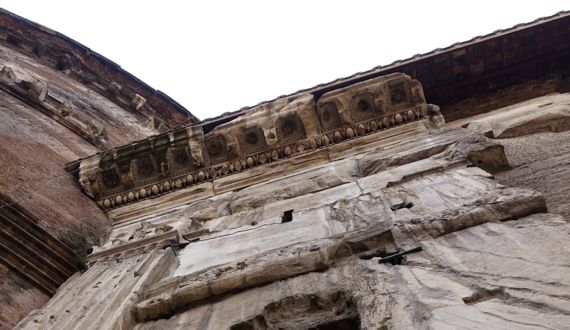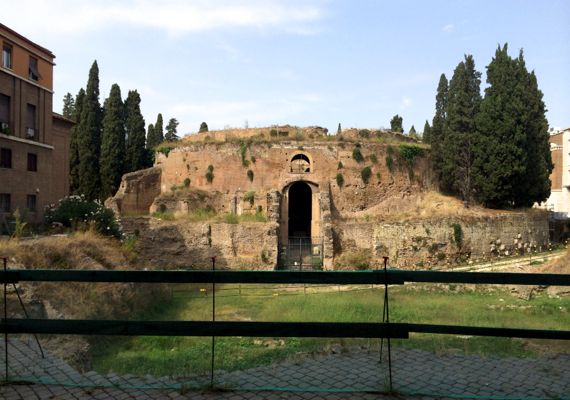
World’s largest unreinforced concrete dome, invisible, to the left….
We looked at two round buildings today. We got to enter the Pantheon, along with several hundred folks in tour groups, small groups, and couples. Wow! Whatta space! Loved the shapes built into the surfaces, all the gaudy treatment down low and pure architectural simplicity up high. Oculus was spell-binding, along with its huge light-dot.
I suppose I am rather rude here by just showing you the close-up of how the rectangular porch attaches to the famous round central room, and the remaining bits of exterior horizontal architectural detail.

We didn’t get in this one, the Mausoleum of Augustus. Like pretty much every bit of architecture from the ancient days that’s survived in this city, it has been robbed of building stone and decorative elements, and rebuilt and repurposed. This one is amidst another revival phase, which looks like it’s been stalled for several years judging by how robust the grass and weeds are, although it was charged with being finished this year. Ah, yes, Italy’s current financial crisis?
The lower level we see now, that was street level when this was finished in 28 BC. Augustus did not die until AD 14 (making the current architectural revitalization timed with 2K yrs after his death), and several decades before that Strabo described it as a great mound. See, it had a checkered history before the guy it was built for even died! Much of what we see is the 12th–C remodeling into a fortress by the Colonna family. In the 20th C it was for a time a concert hall, including hosting Arturo Toscanini leading a concert here.
The Pantheon (hall of all gods) was commissioned during the reign of Augustus, in 27 BC. Recently examined bricks, however, indicate that construction of this version dates to Trajan’s time (he ruled 98–117). Two intermediate versions burned (hence the Trajan replacement), although the building has remained in use since it was built. The whole north porch has been re-conceived and rebuilt several times, including that the porch extended several meters farther north, and the open garden that was to the north is long gone. The piazza there looks like its surface has been raised by several meters, as is typical across the old city.